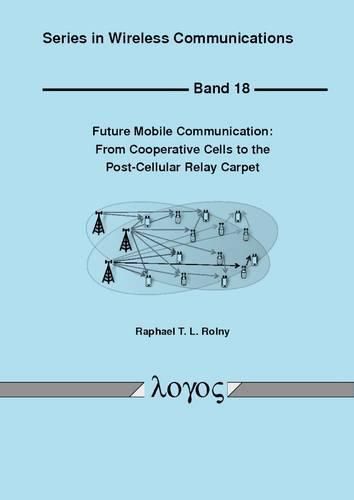Readings Newsletter
Become a Readings Member to make your shopping experience even easier.
Sign in or sign up for free!
You’re not far away from qualifying for FREE standard shipping within Australia
You’ve qualified for FREE standard shipping within Australia
The cart is loading…






The increasing demand for ubiquitous data service sets high expectations on future cellular networks. They should not only provide data rates that are higher by orders of magnitude than today’s systems, but also have to guarantee high coverage and reliability. Thereby, sophisticated interference management is inevitable. The focus of this work is to develop cooperative transmission schemes that can be applied to cellular networks of the next generation and beyond. For this, conventional network architectures and communication protocols have to be challenged and new concepts need to be developed. Starting from cellular networks with base station cooperation, this thesis investigates how classical network architectures can evolve to future networks in which the mobile stations are no longer served by base stations in their close vicinity, but by a dynamic and flexible heterogeneity of different nodes. With the transition from classical cell-based networks to relay enabled post-cellular networks, we trade off node complexity with density. Aggressive spatial multiplexing can thereby deliver high data rates to large areas in a very efficient way, even when the backhaul capacity is limited or when in certain areas no backhaul access is available at all. The beneficial performance scaling shows that such post-cellular networks can offer a flexible and dynamic solution for mobile communication of future generations.
$9.00 standard shipping within Australia
FREE standard shipping within Australia for orders over $100.00
Express & International shipping calculated at checkout
The increasing demand for ubiquitous data service sets high expectations on future cellular networks. They should not only provide data rates that are higher by orders of magnitude than today’s systems, but also have to guarantee high coverage and reliability. Thereby, sophisticated interference management is inevitable. The focus of this work is to develop cooperative transmission schemes that can be applied to cellular networks of the next generation and beyond. For this, conventional network architectures and communication protocols have to be challenged and new concepts need to be developed. Starting from cellular networks with base station cooperation, this thesis investigates how classical network architectures can evolve to future networks in which the mobile stations are no longer served by base stations in their close vicinity, but by a dynamic and flexible heterogeneity of different nodes. With the transition from classical cell-based networks to relay enabled post-cellular networks, we trade off node complexity with density. Aggressive spatial multiplexing can thereby deliver high data rates to large areas in a very efficient way, even when the backhaul capacity is limited or when in certain areas no backhaul access is available at all. The beneficial performance scaling shows that such post-cellular networks can offer a flexible and dynamic solution for mobile communication of future generations.